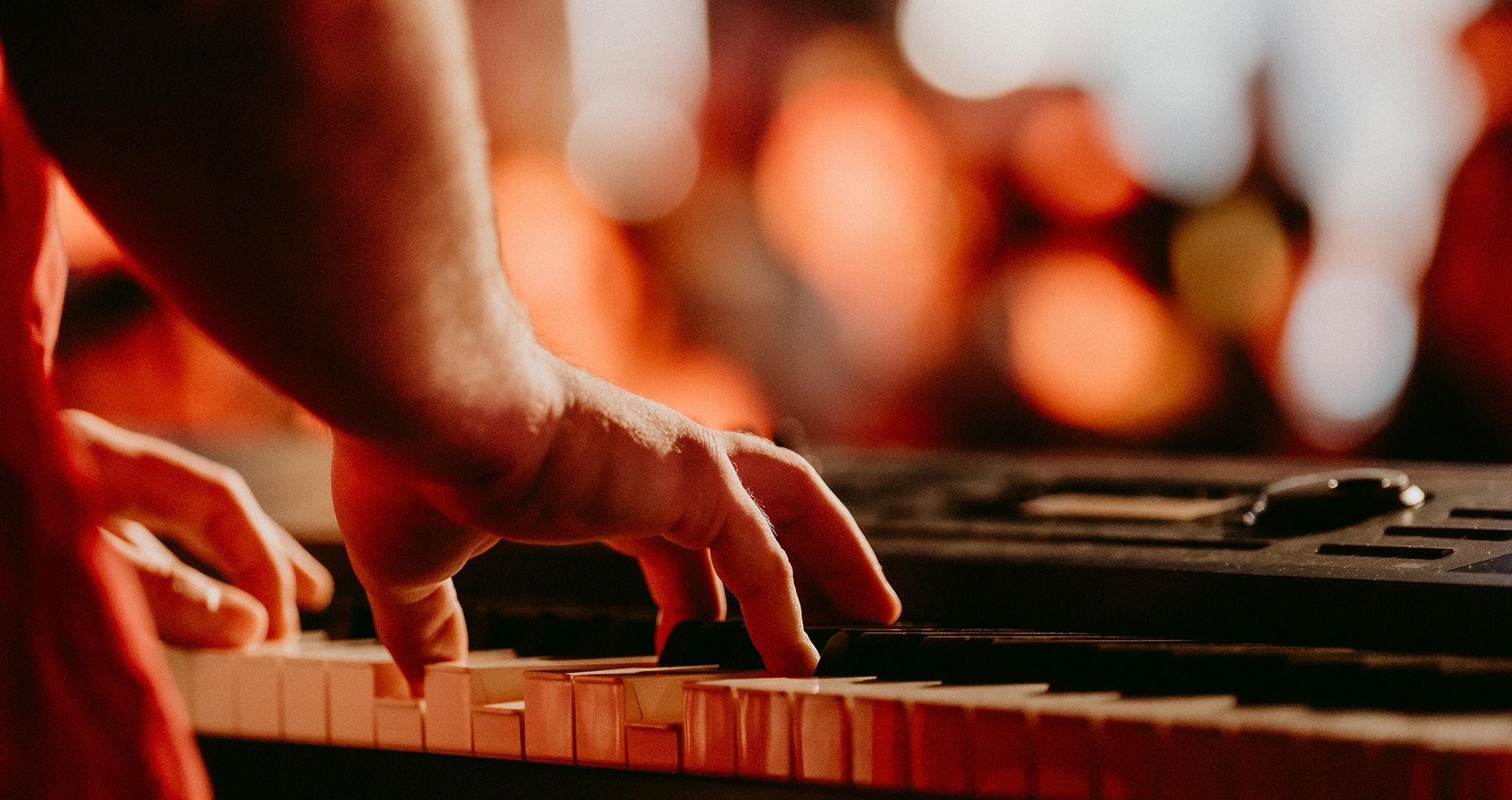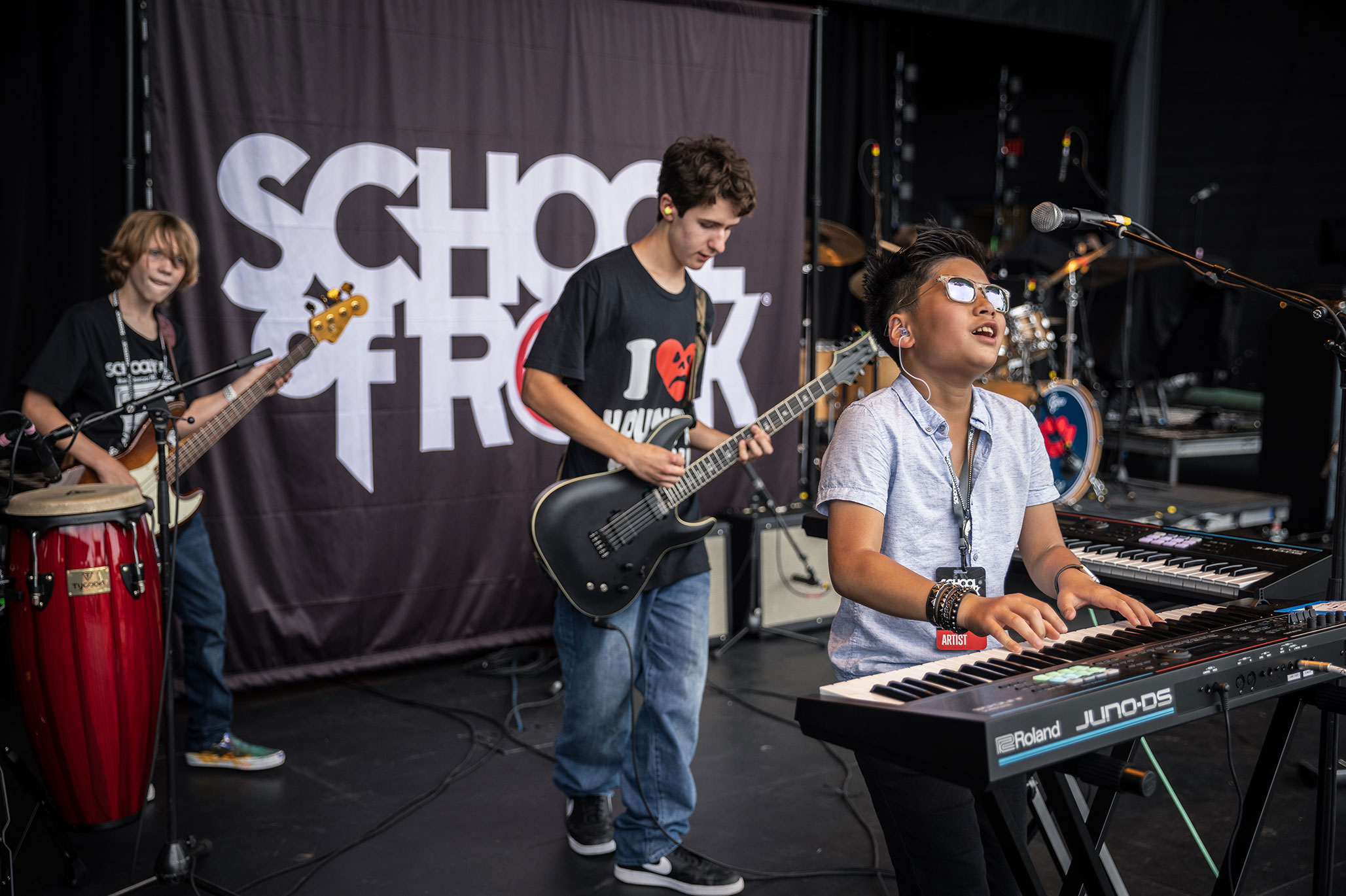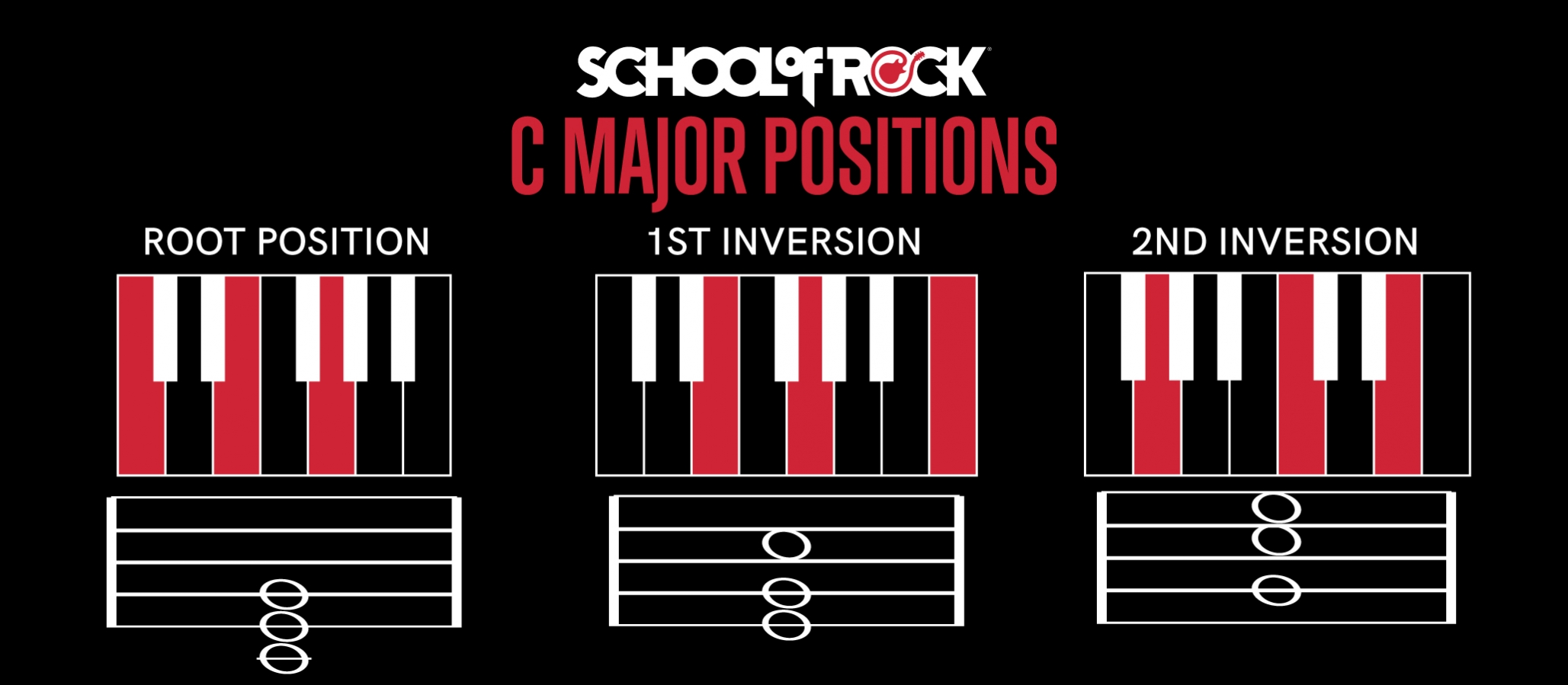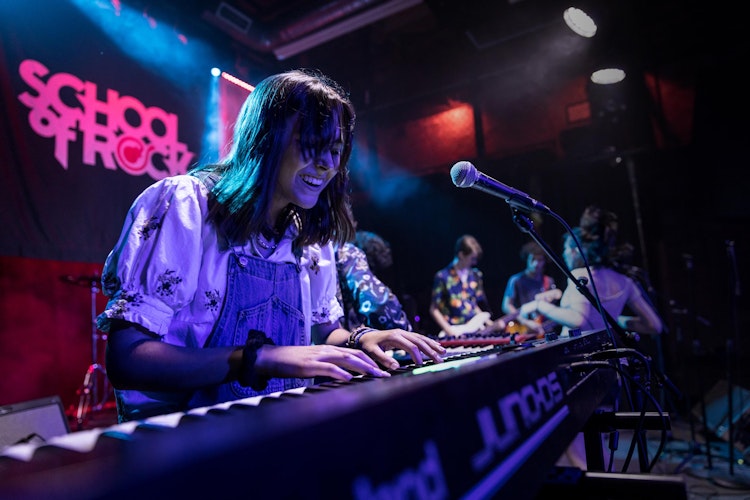Feeling ready to take your keyboard playing to the next level? These tips will help you stand out as a keyboardist in any band.
Playing music with others is one of the most rewarding experiences life has to offer. Here are some tips on how to play keyboard in a rock band.

Be Familiar with your Instrument
Every keyboard instrument handles differently. When learning how to play keyboard in a rock band, it's important to know your own instrument and its capabilities. The soundbank, touch sensitivity, and weight of your keys impact the kinds of key parts you can most easily play. It’s good to keep this in mind when buying your first keyboard. What works on a piano patch will not sound as good on an organ patch and vice versa. Knowing what types of keys work with different types of rock keyboard sounds makes you a real keys player.
Piano: the classic sound everyone is familiar with. Piano patches sound good across the whole keyboard and are extremely versatile. Some piano patches are bright, with bold and brash sounds, while others are darker with no percussive element and a more somber tone. Piano patches don’t respond to quick attacks as well as electric piano patches.
E. Piano: electronic piano patches take the behavior of a piano patch and add more potential for funk. The percussive quality of the attack boosts your status as a rhythm player.
Organ: organ patches add a full retro sound to any song. They work well for both lead and rhythm in a song but it’s important to know how to play chords specifically for an organ. If you play chords like you would on a piano patch, the sound will quickly get muddy. Spreading notes across the rock keyboard and being intentional with your low end is important to not overwhelm the sound of the band.
Clavinet: clavinet has a brighter sound that cuts through a mix very well but can also get muddy quickly. The patch is famously used by Stevie Wonder in “Superstition” for a funky keys bass line.
Synthesizer: there are thousands of synthesizer patches to choose from, each with its own unique sound. These patches fall into two broad categories: synth pads and synth leads. Pads are used more for texture; to take up ambient space and fill out the sound of a song. They are typically used while holding chords. Leads are brighter monophonic patches that only allow one note to sound at a time. These are great for playing iconic melodies and keys riffs.
Knowing When to Play Less
What distinguishes a good keys player from a great keys player is knowing when and how much to play. Sure it’s fun to play something flashy, but the rock keyboard is a versatile instrument in the band and requires a lot of listening to bandmates and reading the room to play well. You need to listen to the song and hear the empty spaces - what register is missing? A great keys player hears what the song needs and fills in that space.
Be Aware of the Bass Register
When you first start learning how to play keyboard in a rock band, you may feel uncertain about what to do in the bass register. After all, the band has a bassist and you don’t want to step on their turf. Remember a great keys player listens for what the song needs - this means you need to pay close attention to your bassist.
If the bassist is playing something relatively simple, you can use octaves in your left hand to double the bass part. If they’re playing something more intricate, consider shifting both your hands to a higher octave to help spotlight their bass line.
Remember, the lower the frequency the easier it is to muddy your sound. It’s better to err on the side of fewer notes in the bass register than too many. If you want to play more notes, be sure to spread them further apart and use open voicings to keep the sound balanced and beautiful.
Syncing with the Drummer: Why It’s Important
When learning how to play keyboard in a rock band, you should remember that you are a member of the band’s rhythm section - the backbone of any song. You, the drummer, and the bassist need to be totally in sync.
It helps to get to know your bandmates outside of rehearsal. You want to know your drummer’s non-verbal cues and be able to give them non-verbal cues yourself. Eye contact is helpful for making sure all your hits are in unison. Oftentimes your chord progression rhythm will lock up with your drummer’s snare or hi-hat rhythm, so keep an eye on their hands!

Inversions: What They Are and How to Use Them
Inversions are different ways of stacking chords that bring out different flavors and sounds. Using inversions is crucial to your growth as a rock keyboard player and helps make playing more fun, too!
Every chord can be inverted. 3-note chords can be played in 3 positions: root position, first inversion, and second inversion. Take a C major chord for example:

To easily practice finding chord inversions as you learn how to play keyboard in a rock band, you’ll first need to play a chord in root position, then let go of your root note. Now carefully move your fingers so your lowest finger is now on what was your middle note, and add the note you took away to the top of your stack. You’re now in first inversion! If you do this process again, you’ll find yourself in second inversion. One more cycle will bring your hand back to root position but up an octave from where you first began.
Using the correct fingers for each inversion type is important for keeping your playing dexterous. Talk with your School of Rock teacher about the finger patterns for each inversion.
When picking which inversion to use, you want to keep a few things in mind. Root position chords are very stable sounding while first and second inversion each feature one note further away. In first inversion this is your top note and in second inversion it’s your lowest note. The note that is a fourth away will stand out more and dominate the inversion’s color.
Whichever note you put at the top or bottom of the inversion will emphasize a different aspect of a chord progression (this is an important aspect to keep in mind when learning how to play keyboard in a rock band). Maybe you want to put a melody at the top of your right-hand part - you can use inversions that leave melodic notes on the high end of every chord to really bring out that internal melody. Maybe you want to do a chromatic walkdown and harmonize with the bass line - you can pick inversions based on their lowest notes to deliver.
Keeping your hand comfortable and your movements fluid is important, too. This is another reason rock keyboard players love inversions - you can move your hand more quickly between chords when you invert them.
Listen to the Music
The best way to become the keyboard player you’ve always dreamed of being is to look and listen closely to your musical role models. By analyzing what they do that works, you can get a better sense of what you appreciate as a listener and audience member and provide that to others yourself. This can also help you to write better piano parts.
Freddie Mercury of Queen is known for being a virtuosic pianist, but did you know many of his iconic piano parts rely heavily on arpeggiating different inversions? The iconic intros of both “Bohemian Rhapsody” and “Don’t Stop Me Now” use arpeggiated chord inversions to deliver memorable rock keyboard melodies known the world over.
About the Author
Miranda Shakes is a multi-instrumentalist and songwriter from San Ramon, California. A lifelong singer and piano player of more than 20 years, she started learning bass during her time at Lewis & Clark College in Portland. She graduated from San Francisco State University with a master's degree in Education with an emphasis in Equity & Social Justice. Miranda is a music director, singing teacher, and keyboard + piano teacher at School of Rock Issaquah.






